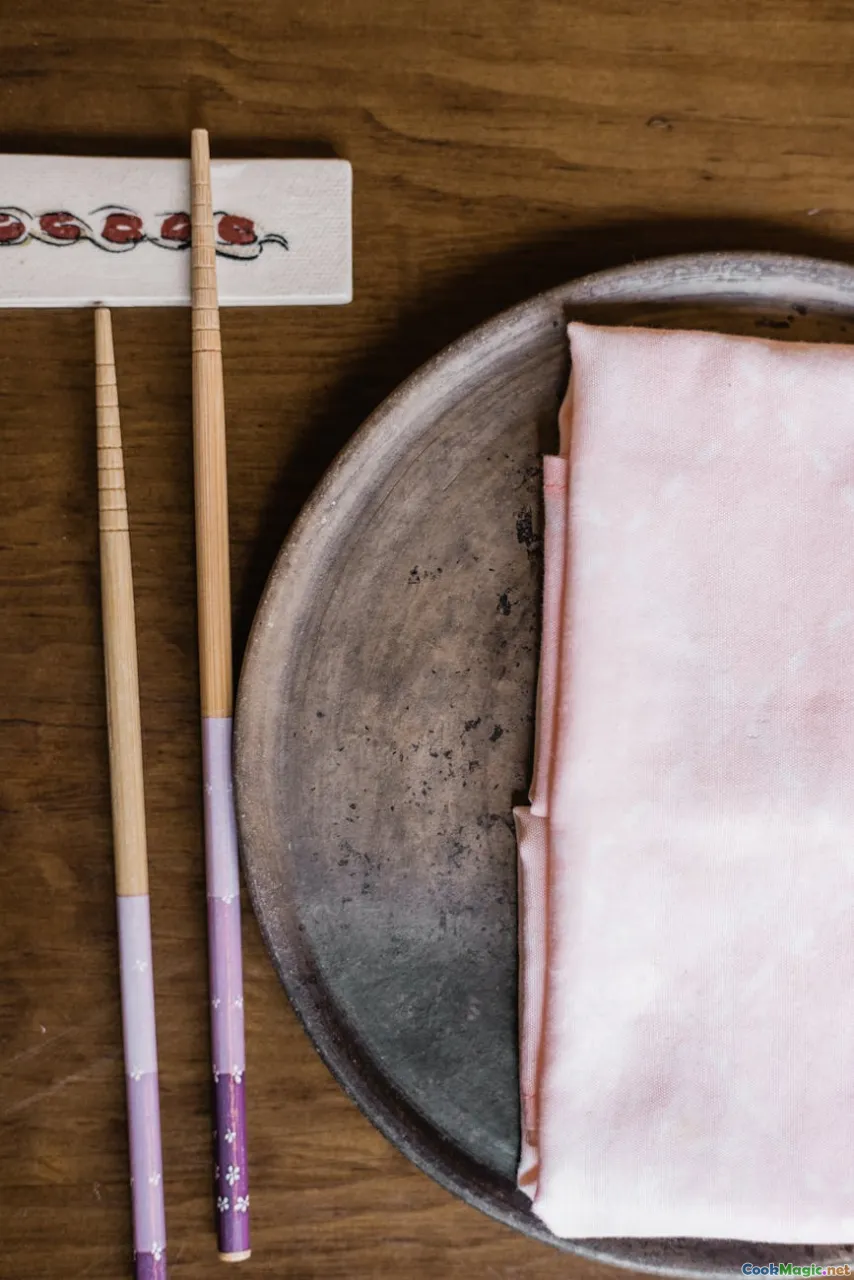A Deep Dive into Korean Temple Food Philosophy
7 min read Explore the serene world of Korean temple food—its origins, philosophy, and sensory experience that promotes health, mindfulness, and spiritual harmony. May 02, 2025 07:00
A Deep Dive into Korean Temple Food Philosophy
Imagine stepping into a tranquil Korean temple, where the air is infused with the subtle aroma of simmering herbs and the gentle clink of ceramic bowls echoes serenity. Here, food transcends mere sustenance—it becomes a spiritual practice rooted in centuries-old Buddhist traditions. Korean temple food embodies a philosophy of mindful eating, respect for nature, and harmony between body and mind.
The Origins and Historical Roots of Korean Temple Food
Korean temple food, known locally as "Sanchon" or "Seon Buddhist cuisine,” traces its origins back to the introduction of Buddhism to Korea over 1,700 years ago. As monks sought to cultivate inner peace and spiritual clarity, their approach to food evolved beyond nourishment into a form of meditation and self-discipline.
Historically, these foods were prepared in monastic kitchens with an emphasis on simplicity, purity, and seasonal ingredients. During the Joseon Dynasty (1392–1897), the practice was formalized, and recipes were passed down through generations, emphasizing the avoidance of meat, garlic, onions, and strong spices that could stimulate the senses or disturb meditation.
Core Principles of Korean Temple Food
1. Vegetarian and Plant-Based Focus
At the heart of temple food is its vegetarian nature, grounded in Buddhist precepts that advocate compassion and non-violence. The cuisine relies heavily on vegetables, grains, legumes, and seaweeds, creating a palette of flavors that are subtle yet profoundly satisfying.
2. Seasonality and Local Sourcing
Temple chefs meticulously select seasonal ingredients, reflecting a deep respect for nature's cycles. This practice ensures freshness, optimal flavor, and alignment with the natural world.
3. Minimal Processing and Preservation
The dishes are prepared with minimal processing, highlighting the natural taste and texture of ingredients. Fermentation, pickling, and drying are traditional techniques used to enhance flavor and preserve food.
4. Mindful Preparation and Consumption
Cooking is a meditative act—slow, deliberate, and respectful. Eating is equally mindful; practitioners focus on taste, texture, and the act of gratitude, fostering a sense of spiritual harmony.
Sensory Experience: The Taste, Aroma, and Texture of Temple Food
Imagine biting into a perfectly steamed patjuk (red bean porridge), its velvety texture melting on the tongue, subtly sweet with earthy undertones. Or savoring a kimchi made without garlic or shrimp, where the fermentation imparts a complex umami aroma and a gentle tang.
The visual appeal of temple food is understated yet elegant—simple white rice paired with vibrant pickled vegetables, green seaweed soups, and banchan (side dishes) arranged with care. The aroma is soothing—light, herbal, and devoid of overpowering spices—allowing the natural fragrances of ingredients to shine.
Textures vary from soft and creamy to crisp and crunchy, engaging all senses and encouraging a slow, appreciative eating experience.
Notable Dishes and Ingredients
1. Bap (Steamed Rice)
The staple, often served plain or with a dash of sesame oil, forms the foundation of every meal.
2. Namul (Seasoned Vegetables)
A variety of seasoned greens, roots, and flowers, often blanched or sautéed with sesame oil, garlic-free, and flavored with soy or fermented bean paste.
3. Jeon (Pancakes)
Vegetable or grain-based pancakes, lightly pan-fried, offering a crispy exterior with tender interior.
4. Fermented Foods
Kimchi without garlic or seafood, doenjang (fermented soybean paste), and gochujang (fermented chili paste) are used sparingly, emphasizing fermentation’s health benefits.
5. Herbal Soups and Teas
Infused with medicinal herbs like ginseng, lotus leaf, or chrysanthemum, these promote well-being and spiritual clarity.
The Spiritual and Cultural Significance
For monks and lay practitioners alike, temple food is more than nourishment—it's a form of meditation, a way to cultivate compassion, patience, and mindfulness. Each meal is an act of gratitude for the bounty of nature, a reflection of humility, and an opportunity to nourish both body and spirit.
In modern Korea, this philosophy has transcended monastic walls, influencing contemporary health-conscious dining and gourmet vegetarian cuisine. Restaurants specializing in temple food, such as the renowned Sanchon in Seoul, serve as culinary sanctuaries where guests can experience this serene, soulful approach.
Personal Reflections and Modern Adaptations
Having personally explored Korean temple cuisine, I was struck by its profound simplicity and elegance. The first bite of a steaming bowl of bap accompanied by a side of lightly seasoned vegetables transported me to a state of calm and gratitude. It was a reminder that food, at its purest, is an act of reverence.
Today, chefs worldwide draw inspiration from this philosophy—creating dishes that honor seasonal ingredients, emphasize plant-based flavors, and promote mindful eating. Importantly, the core values of respect for nature, compassion, and spiritual discipline remain timeless.
Conclusion: Embracing the Philosophy of Temple Food
Korean temple food offers a compelling blueprint for a mindful, compassionate, and healthful way of eating. It challenges us to slow down, appreciate the natural flavors of ingredients, and connect with the earth and ourselves on a deeper level. In a fast-paced world, this ancient culinary tradition reminds us that nourishment is not just physical but also spiritual—a practice that can foster peace, balance, and harmony at every meal.
Whether you seek a tranquil retreat for your senses or a new perspective on healthy eating, exploring Korean temple food invites you into a sacred space where food becomes a path to inner peace.









